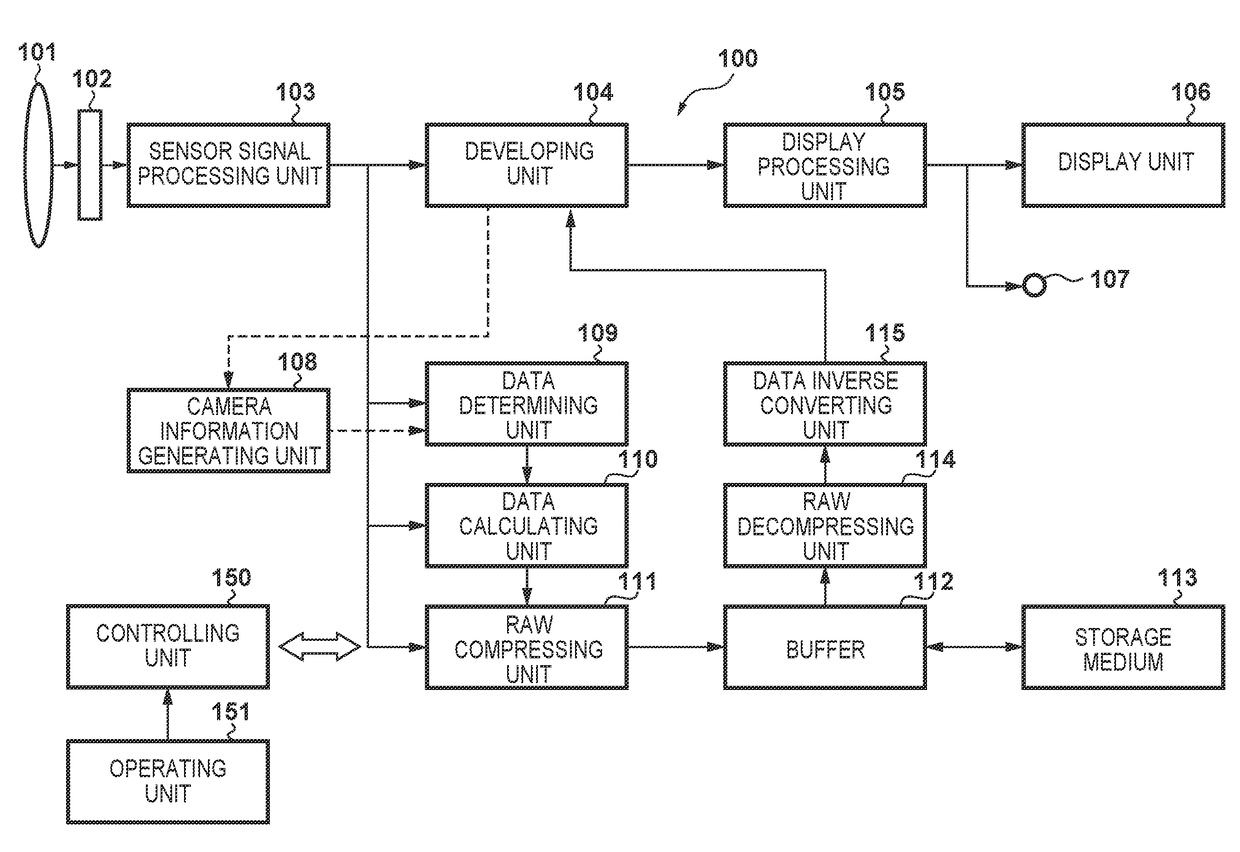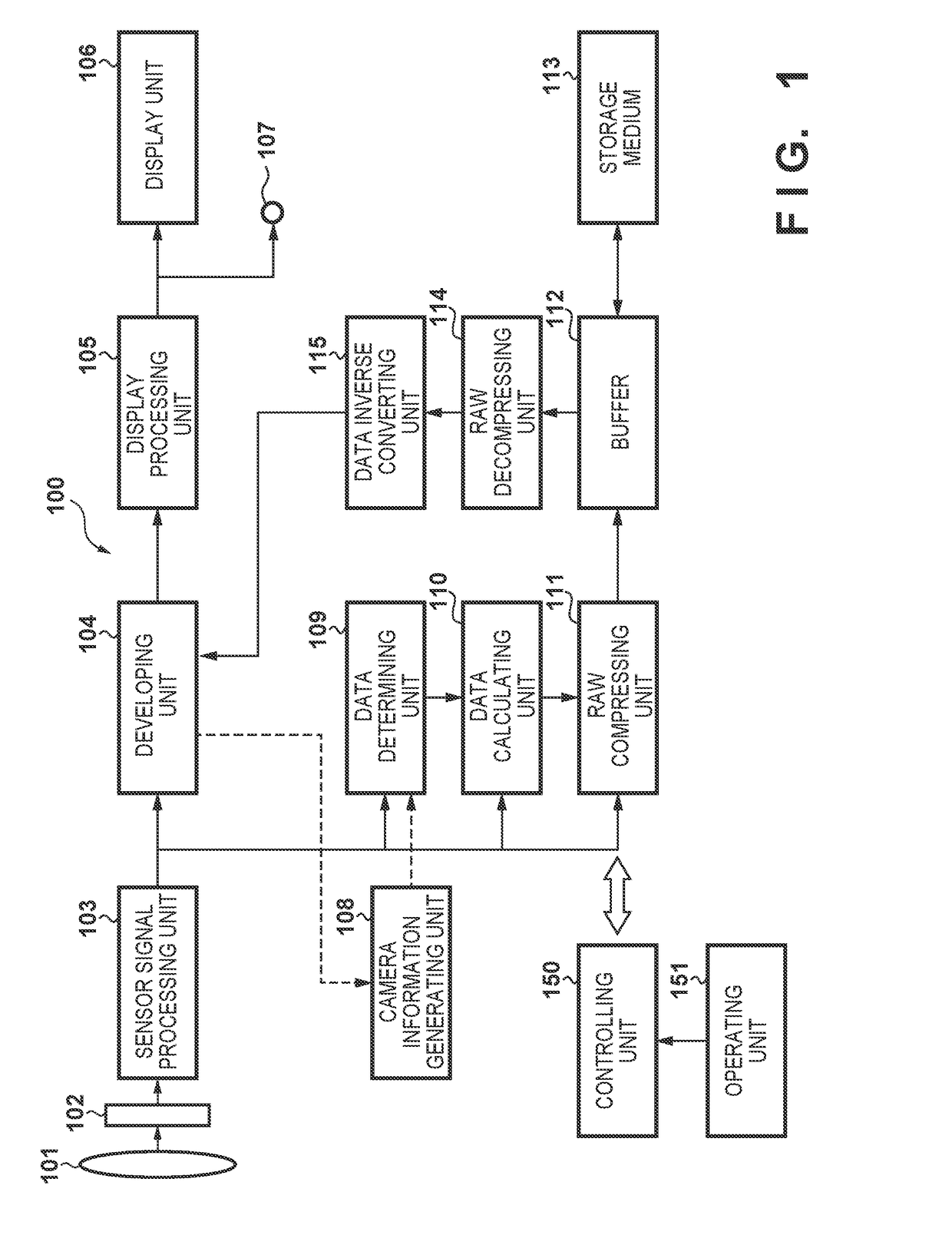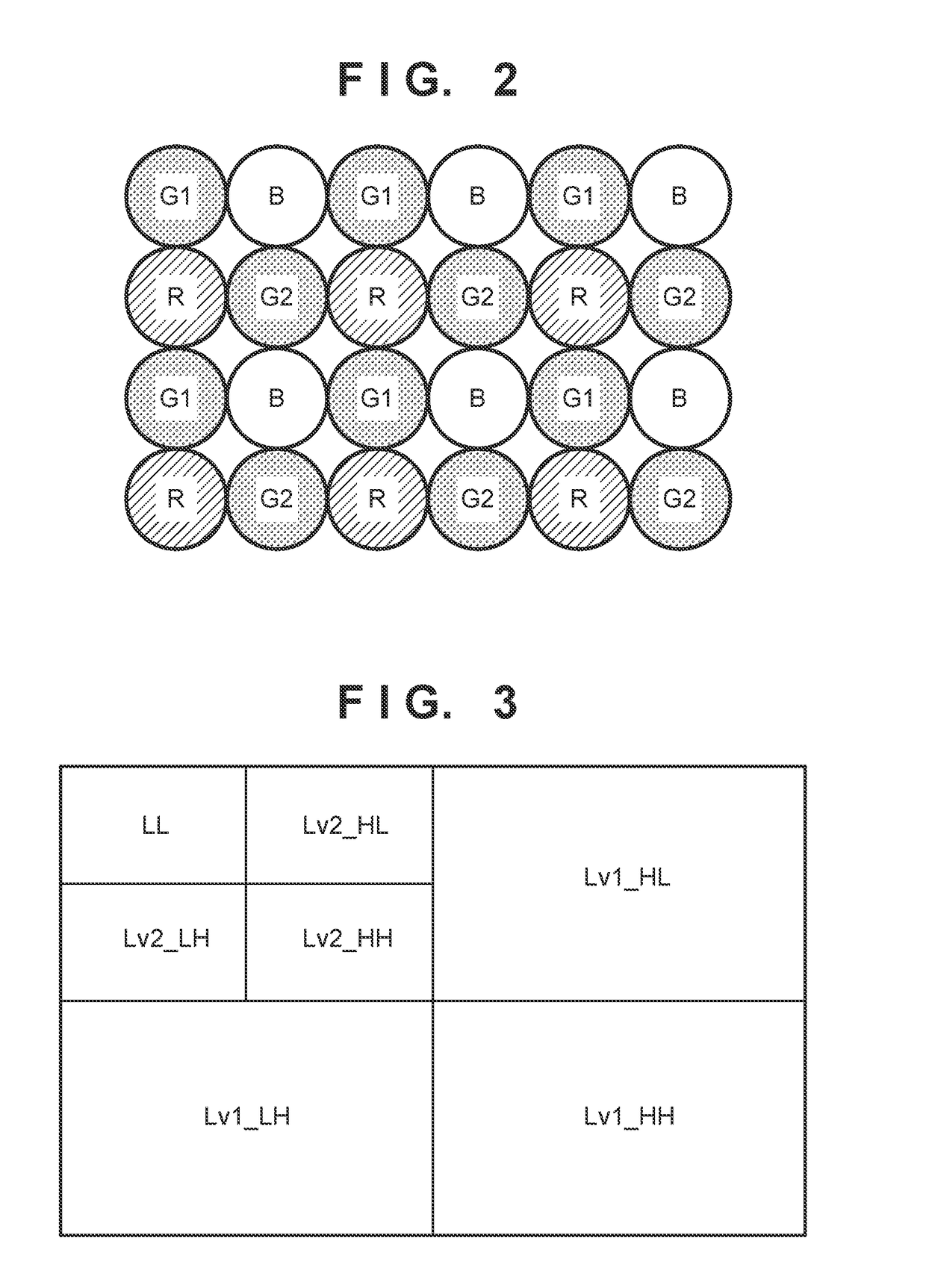Imaging apparatus and control method thereof
a technology of image quality and control method, applied in the field of image quality degradation and control method, can solve the problems of image quality degradation due to compression, and achieve the effect of suppressing image quality degradation and high encoding efficiency
- Summary
- Abstract
- Description
- Claims
- Application Information
AI Technical Summary
Benefits of technology
Problems solved by technology
Method used
Image
Examples
first embodiment
[0024]FIG. 1 is a block diagram showing an example of the arrangement of an imaging apparatus 100 according to the first embodiment. In FIG. 1, a controlling unit 150 controls the overall apparatus and includes a CPU, a ROM storing programs to be executed by the CPU, and a RAM which is used as a work area. This controlling unit 150 is connected to an operating unit 151 that accepts instruction inputs from a user.
[0025]In the arrangement shown in FIG. 1, when the user inputs a shooting instruction via the operating unit 151, an optical image of an object serving as an imaging target is formed on an image sensor unit 102 via an optical system 101 under the control of the controlling unit 150. The image sensor unit 102 generates electrical signals representing the intensity of light transmitted through red, green, and blue (RGB) color filters arrayed on corresponding pixels.
[0026]FIG. 2 is an example of the color filters arranged on the image sensor unit 102 and represents the pixel ar...
second embodiment
[0068]FIG. 10 is a block diagram showing the arrangement of an imaging apparatus according the second embodiment. The same reference numerals will denote the same components as those used in FIG. 1 of the above-described first embodiment. In addition, since the overall processing is the same as that described above, only parts having different processes will be described below.
[0069]A plane converting unit 216 generates, from the RAW image data input from sensor signal processing unit 103, a total of four planes comprised of a Y plane representing luminance and three planes representing color differences C1, C2, and C3. More specifically, the relationship between the aforementioned four planes and the R, B, G1, and G2 planes which are directly separable from the RAW image data can be shown as follows.
Y=(R+B+G1+G2)4C1=R-G1C2=B-G2C3=R+G12-B+G22
[0070]Note that the four planes comprised of one plane representing the luminance Y and three planes representing the color differences C1, C2,...
third embodiment
[0077]The arrangement of an imaging apparatus according to the third embodiment is the same as that of FIG. 1 in the first embodiment. In the third embodiment, it is possible to perform a non-linear conversion process on each plane or subband without having to perform color conversion processing on each plane. Furthermore, non-linear information can be represented in various ways.
[0078]FIG. 13 shows the data structure of non-linear information according to the third embodiment. In the same manner as in FIG. 9, there is an identification number, and then a polynomial type is described. In the same manner as in the first embodiment, “Ploytype2” has been set as equation (2). A coefficient “e” is stored in the next position. In addition, if the non-linear count of a plane header portion is 2 or larger, the intersection point information is stored as “PI”. This is described as an input value “x” and an output value “y”. Next, after a “Point type” is described, a transformation is formed ...
PUM
 Login to View More
Login to View More Abstract
Description
Claims
Application Information
 Login to View More
Login to View More - R&D
- Intellectual Property
- Life Sciences
- Materials
- Tech Scout
- Unparalleled Data Quality
- Higher Quality Content
- 60% Fewer Hallucinations
Browse by: Latest US Patents, China's latest patents, Technical Efficacy Thesaurus, Application Domain, Technology Topic, Popular Technical Reports.
© 2025 PatSnap. All rights reserved.Legal|Privacy policy|Modern Slavery Act Transparency Statement|Sitemap|About US| Contact US: help@patsnap.com



